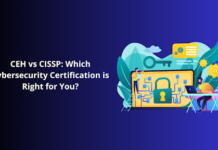Table of Contents
How to Increase Productivity Levels for Online Education? COVID-19 has impacted our lives in an unprecedented way. Trillions of dollars of economic loss, healthcare crisis, challenging lockdowns, unemployment, and a never-ending list of other problems. Humans are indeed going through one of the most disruptive times of history. However, human’s usual survival instincts rose to the occasion and enabled us to survive these testing times. Though COVID has not ended by now, we have somewhat reached the post-crisis stage.
This pandemic has certainly conditioned us for new things. Digitalization is one of those facets. Our offices, our markets, and most importantly, our education have shifted to online platforms at an unprecedented rate. Online traffic has radically increased over the last two years, and students constitute a large chunk of this traffic. Online education has gained tremendous popularity during COVID-19. Schools, colleges, and universities were closed to prevent the pandemic from spreading. In such a scenario, all the classes shifted to online modes.
COVID disturbed an estimated 2.7 billion students. Some shifted to online classes, and some decided to take homeschooling. But many enrolled in online programs to continue their education. Students from all levels of schooling adapted either of these options.
Unfortunately, research has shown that students’ productivity in online education is lower than in physical education. If you are trying to understand more about this concern, you have come to the right place. This article discusses some ways to increase the productivity level of online education.
1. Incorporate Practicality
Learning something without understanding its practical application is entirely useless. Education systems that emphasize in-class learning and tend to ignore practical knowledge have never produced skilled individuals. Online education further exacerbates this situation. Students are already away from labs and other amenities, which allow them to practice what they learn. Their skillset is not receiving the proper practical nourishment necessary to prepare for the actual world. In such a scenario, institutes should go the extra mile to incorporate practicality and real-world experience for students. Institutes offering online post master’s certificate nurse practitioner programs have taken the best initiative in this regard. They have officially partnered with hospitals to provide students practical experience.
2. Increase Media Richness
Media richness refers to the tendency of a communication channel to encourage interaction. Higher media richness facilitates a more significant content transfer. It involves more sense usage. It means audio should have visual aid with pictures, pictures with motion, and motion with more reality. We have seen a paradigm shift in online education pedagogies where teachers are now using video lessons and interactive presentations. However, there is more room for improvement. The live student-teacher sessions can be improved by increasing media richness. We need more high-tech software and digital platform to ensure better scholarly communication and accountability.
3. Designate a Proper Place
It would help if you had a proper place designated for online classes. This place should have all the requirements you need to take your class easily without any distractions. It doesn’t mean you require an entirely new office space. It is just a place where you can get into the proper mental zone for studying. The surroundings help your mind to focus on education. Your brain will automatically turn more active and awake as you get into this space. You will be able to complete more work in less time. It will enhance your overall productivity because your brain will naturally learn to process more in this area of Matokeo ya Darasa la Saba 2022.
4. Develop Resilience
Emotional and mental resilience is of crucial importance to students. In online education, you certainly don’t have to confront that irritating bully of your class. But you also lose out on your friends. Healthy interaction with friends is undoubtedly the best mind booster. It encourages positive behaviors and relieves stressors. Therefore, online education should have activities and sessions that work on the mental health of students. It should encourage personality development and resilience in students. Online programs should work on the 7Cs of resilience. The activities should focus on the relevant attributes and subtly integrate them to provide necessary training to students.
5. Offer Flexibility
The lesson and schedule planners of online education should devise plans according to the context. They should realize that it is not a classroom but their home. The lesson planners should accommodate enough flexibility to let students maintain a balance between their personal life and online education. It would reduce the useless burden and help students realize their true potential. Well-designed lesson planners increase productivity because they offer the right balance of education with flexibility. Students will enjoy proper leisure and take up healthy hobbies. Once they feel relaxed, they can focus on education in a better way.
6. Knowledge Oriented Assessment
Online education provides us the best avenue to revitalize the real purpose of education. Students run after grades and tend to ignore the intrinsic value of knowledge. Online education is a medium where educators can easily experiment with knowledge-oriented assessments rather than result-oriented exams. It doesn’t suggest promoting students without them passing the standards. It just emphasizes initiating a change of attitude toward education. It will motivate students to go beyond the traditional syllabi and explore the world of knowledge. The entire education pedagogy should utilize the contemporary emergent curriculum, which will uplift this system’s productivity.
Final Thought
According to National Center for Education Statistics, almost 35% of total students in America gain education online. COVID-19 directly affected about 70% of the global student population. Therefore, we can only expect a further rise in online education over the next five years. People who were skeptical of online education have seen for themselves how it can prove effective for students. A large majority will continue the online mode of education even when everything comes back to normal. Therefore, education institutes, student bodies, and administration have to incorporate positive changes in their functional design. They have to adopt specific measures to ensure an effective learning transfer through online mediums. A media upgrade, improved practicality, and contemporary education delivery plans can certainly increase online education productivity.









